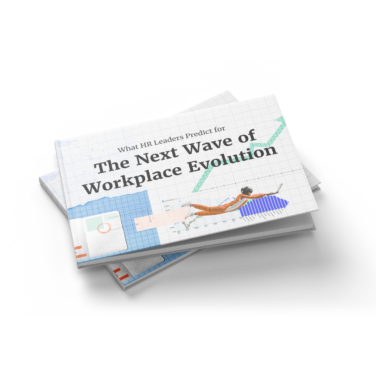Providing a comprehensive employee onboarding experience is something a lot of organizations neglect. According to Gallup, only 12% of employees say that their organization is excellent at onboarding new personnel.
We get it, people are busy and there are tons of projects all happening at once.
How can you handle the onboarding process as efficiently as possible in the shortest time possible and help your new employees get off to the best possible start?
Answer: Automated onboarding.
In this article, I’ll share how to streamline onboarding new hires by taking some repetitive tasks off HR and managers' plates. An automated onboarding process will make your new employees feel welcome, integrated, and prepared to hit the ground running.
What is Automated Onboarding?
Automated onboarding refers to the process of onboarding employees using a combination of digital workflows and automation software.
You can achieve automated onboarding using a variety of software systems, including dedicated onboarding software, HR management systems, or sometimes even recruiting software.
Essentially, you can use these platforms to automate employee onboarding by triggering predefined actions that are linked to key events within the new employee lifecycle.
You can use them to notify new hires, managers, or your entire HR department of any onboarding tasks that are incomplete, nudging them gently to help them succeed.
Other times, automated employee onboarding software requests integrated apps to change data. Overall, it's an easy way to increase the ROI from your onboarding process.
Here are a few examples of onboarding tasks that software can easily automate:
- Create new user accounts within a company directory
- Grant access to apps or other software systems
- Request equipment that new hires need
- Schedule orientation meetings
- Request signatures on onboarding documents
- Establish the connection between new employees and their buddies
- Distribute feedback surveys about the onboarding process.
Any process that can be automated through an HR system, or a project managing system, should be. This increases efficiency and decreases the chance of having things slip through the cracks and negatively impacting the new hire’s perception of the organization.
But, before we dive deep into the why of automated onboarding, let's recap why it's an issue in the first place.
Challenges of Manual Employee Onboarding
If you haven't done it in a while but you're preparing for an upcoming tsunami of new hires, this is what you must avoid:
1. Lower Efficiency
A manual onboarding process is time-consuming for everyone involved. From HR personnel to IT support teams and managers, ticking off the onboarding checklist for each new hire takes time.
Besides, when you're so caught up in high-revenue projects, employee onboarding isn't a priority. And putting a lot of effort into customizing the onboarding experience for newcomers is only going to gobble up more of your time.
Traditionally manual processes are also cumbersome for less mature companies with limited staff. For instance, documenting employee data and assigning onboarding tasks take up much of their time.
Automation is a way of optimizing onboarding by reducing the amount of manual tasks.
2. Reduced New Hire Excitement
If new employees spend the first day or week trying to get access to apps, chasing documents amid all the corporate systems, and asking the manager to go over the role expectations, you've got a problem.
You see, recruits gain momentum with the new job. And if you're trying to build a motivating onboarding experience manually, you might be sacrificing customization for speed, which kills newcomer excitement.
That's why it's prudent to add a personal touch to your onboarding process too.
3. More Human Error
Manual onboarding tasks are error-prone. For instance, the HR team might run late to collect and save all the required employee information for payroll and benefits and onboarding compliance.
Or they might forget to store those data in all the required locations, or even forget where they stored it.
These mistakes also impact your ability to measure onboarding success.
Luckily, automation software can handle these error-prone data entry and other administrative tasks for you.
4. Manual = Not Scalable
If your company, like most, is planning for growth, you'll want to eliminate many manual processes to make things scalable.
The processes you relied on to onboard your first 10 or 20 employees might have worked back then, but things will get out of control quickly when you're onboarding larger numbers.
Instead, take a step back and look for ways to re-design your onboarding program to make better use of automated workflows, self-service functions, and easily repeatable processes, such as sending onboarding surveys or templates for different employee use cases.
As the main HR contact for onboarding, no one would know how to handle it if I was away. Automating key parts of the process really helped to smooth this out. Once a candidate signed their employment contract, a series of automated workflows would notify key stakeholders of all their required tasks, meaning nothing fell through the cracks due to manual processes.
Now, let's get into the specific details explaining what you can automate, and how.
4 Steps to Automate Onboarding
If you're wondering about the steps you must take to automate your manual onboarding process, we got you.
Below, I've highlighted several key areas where you can automate your hiring process, whether you're onboarding new remote employees or in-person staff.
1. Define Pre-Onboarding Tasks
You usually do a few things before the new employees' start date, right? Employee onboarding automation can help you with that tremendously. Just follow the next steps.
The first one consists of listing the pre-onboarding tasks you usually do, such as:
- Creating the employee profile in your human resources information system (HRIS) to capture their role, contact info, banking details, and tax information
- Sending the new hire a welcome email and a form to collect information like clothing sizes (for company swag!) so you can prepare a welcome package
- Adding a new user account to your identity management platform (e.g., Active Directory, Okta, etc.)
- Setting up the newcomer's account in your IT service management system
- Informing the key stakeholders of the recruit's details
- Adding the new employee to the appropriate channels in your business messaging platform
- Asking their manager to indicate the apps that they'll need to do their job (plus the level of access)
- Notifying the IT support team to check the available licenses and grant access
- Alerting the newcomer's manager and teammates to block time on their calendars for introduction calls.
At this point in the onboarding process, you're prepared for the recruits' first day. This means you're one step closer to having a new workforce that'll be productive
2. Standardize Orientation Steps
During a new employee's orientation, we recommend you:
- Schedule an orientation meeting with new hires on their first day
- Connect recruits with each other
- Have them meet their new team members individually
- Disseminate new hire paperwork and
- Provide new hires with a full employee handbook or a shortened handbook for new staff, specifically.
It may sound daunting at first. But, with an automated onboarding process, you don't have to do all this manually. Instead, you can use automated workflows to assist you.
You just have to know exactly what the steps in your orientation workflow are so you can configure the right software solution to follow them. That's how you speed up the process and achieve consistency, by executing the exact same steps each time you onboard a newcomer.
For instance, establish that the orientation workflow includes adding each new employee to your Microsoft SharePoint workspace, or a business communication channel for recruits.
3. Structure the Onboarding Workflow
So far, we discussed the orientation, but the onboarding workflow doesn't stop there. The process includes other workflows, such as
- Documentation workflows (including user account permissions)
- Training workflows (including follow-up assessment quizzes)
- Progress-tracking workflows (including regular check-ins)
- Feedback workflows (including satisfaction surveys)
But first things first, you must design a clear process that standardizes the onboarding experience as much as possible and provides an HR process checklist for those executing the onboarding to follow. Our advice is for you to develop a 30-60-90-day plan.
If you don't know what that is or how to do it, check out our guide on writing a 30-60-90-day plan for your organization's onboarding, which also includes a template.
If you've already created your 30-60-90-day onboarding plan, the next step is to define, at each stage of the plan. It should include the following elements:
- Documentation folders and documents that new employees need access to
- Training courses or internal training tutorials must they complete
- Check-in meetings must they attend
- Satisfaction surveys they must complete
Once that's done, you're ready to automate the onboarding tasks you just structured and outlined.
4. Invest in the Right Software
Consider the steps and timeline in your 30-60-90-day plan, plus the roles involved in each step. They're the input you need for setting up the automated employee onboarding software to run the workflows you just defined.
Well, actually, you also need an adequate tool stack with automated onboarding capabilities. In other words, you need some or all of the following systems:
- An applicant tracking system (ATS)
- An HRIS
- An electronic signature software solution
- A business communication platform
- An employee handbook platform or document management system
- An online form builder app
- A cloud storage app
- A learning management system (LMS)
- A workflow automation software solution that'll integrate all the apps above
You might find that some systems are already built into or integrated with each other. For instance, some HRISs have built-in electronic signature software, and some LMSs integrate with business communication platforms.
It's up to you to evaluate whether you need an entirely new tool or if you can make due with the HR solutions you already have. You'll also need analyze which type of software is best to acquire: platforms with as much built-in functionality as possible or standalone HR systems. You'll also need to assess onboarding software pricing to determine the best option for your budget.
What Can These Software Systems Automate?
Whatever you decide, these are examples of what a workflow automation platform can do for you (automatically):
- Trigger the pre-onboarding workflow as soon as you mark a candidate as hired in the ATS
- Ask your electronic signature software to
- Send employee contracts for review and signature by all the required parties in a predefined order
- Remind those parties of the deadlines
- Notify them of collected signatures in real-time
- Forward the signed contracts to your cloud storage app
- Instruct the HRIS to send new hires online forms to collect their employee data
- Request your business communication platform to
- Add newcomers to an onboarding channel
- Introduce them to their respective onboarding buddies
- Suggest recruits check out the corporate videos, policy and procedure books, employee benefit documentation, and organizational charts in the cloud storage app
- Communicate with your LMS to
- Enroll new employees in the relevant learning paths
- Share links to the appropriate training courses or modules when the right time comes
- Notify the corresponding onboarding buddies of the newcomers' progress in the onboarding training program
Additionally, workflow automation software takes these tasks off your plate:
- Task the IT support team with provisioning software for the new employee
- Assign onboarding buddies to each new hire
- Notify those buddies of the assignment
- Schedule orientation meetings, onboarding meet-the-team calls, and regular check-ins with newcomers in the calendars of those involved
- Send timely reminders to those people
How to Automate Offboarding
Just as automation enhances onboarding, it can also simplify and streamline your offboarding process.
Using automation for this final portion of the employee lifecycle both reduces administrative burdens and ensures nothing important will fall through the cracks.
Here are several ways to automate the employee offboarding process using HR software:
- Schedule an exit interview. Set up an automation to automatically send departing employees an exit interview invitation, complete with a scheduling link and a copy of your exit interview questionnaire. This will help your team collect valuable feedback while making the transition smooth for the employee.
- Notify employees when their benefits coverage will end. Your departing employees will want to know when their benefits will terminate and whether they have any options to continue their coverage privately, such as COBRA in the U.S. or equivalent plans in other countries. This ensures transparency and helps employees make informed decisions about their coverage.
- Revoke system and user account access automatically. You can use automation to deactivate the departing employee’s accounts across all company systems, including email, project management tools, and HR software, on their last working day. This prevents security risks and ensures compliance with data protection policies.
- Generate standard documents for departing staff. If your company has proprietary information you want to protect, you may ask departing employees to fill out a non-disclosure agreement. You can automate this process to ensure all employees with access to proprietary information receive this form.
- Track and reclaim company assets. Set up an automated workflow that notifies IT and facilities teams about company-owned equipment (e.g., laptops, access badges, mobile devices) that need to be returned. This keeps asset records up to date and prevents loss of valuable resources.
- Remove the employee from internal directories and team structures. Use an HR software automation to automatically update org charts, email groups, Slack channels, and internal directories. This keeps communication tools accurate and prevents confusion about the employee’s status.
- Send a goodbye announcement. Automate a company-wide or team-specific farewell email to acknowledge the employee’s contributions and communicate their departure details. This fosters a positive offboarding experience and helps remaining employees prepare for any transitions.
What's Next?
For further onboarding advice, subscribe to our weekly newsletter for HR and business leaders. You'll receive all our latest content to help your grow in your career and make greater impact in your org.



